An alternate history of the home of the Masters.
Illustrations by Violet Frances for Bryan Christie Design
When Bobby Jones and Clifford Roberts conceived of the golf club that became Augusta National, their plans were ambitious: two 18-hole golf courses, one for women; tennis courts, a pool, outdoor squash courts and a bridle trail; an extensive real-estate development with at least two dozen large building lots overlooking the course; and 1,800 members, more than a few of them from overseas. In the spring of 1931, in Augusta, Georgia, they found the ideal property: a defunct commercial nursery, which, Jones wrote later, “looked as though it were already a golf course.”
Jones and Roberts, however, had the misfortune to undertake their project at the outset of the Great Depression. They were able to raise only a fraction of the money they needed, and, in three years of conscientious, nationwide marketing, they signed up just 76 of those 1,800 members, even though fees were attractively low: $US60 a year for men and $15 for wives and children. They did build one golf course, but even before it was completed, they were deeply in debt – so much so that in 1935, eight months after Gene Sarazen hit “the shot heard round the world” at the second Masters, the club’s creditors foreclosed. Then – just as Augusta National was beginning to recover financially – the world went to war. Shortly after the 1942 Masters, the club and the tournament shut down for the duration.
The fact that Augusta National and the Masters exist today is mainly a credit to the stubborn single-mindedness of Roberts, who was determined, against the odds, to create an enduring monument to Jones. But what if things had turned out differently? What if the booming economy of the 1920s had continued into the 1930s? What if Jones and Roberts had been able to raise all the money they needed to fully execute their original plan? What if the world had somehow remained at peace through the 1940s? What if Jones and Roberts had named their club Georgia National (as they almost did anyway because Roberts believed that, with the state’s name in the name of the club, Georgians would be sure to support it)? What would Georgia National be like today?
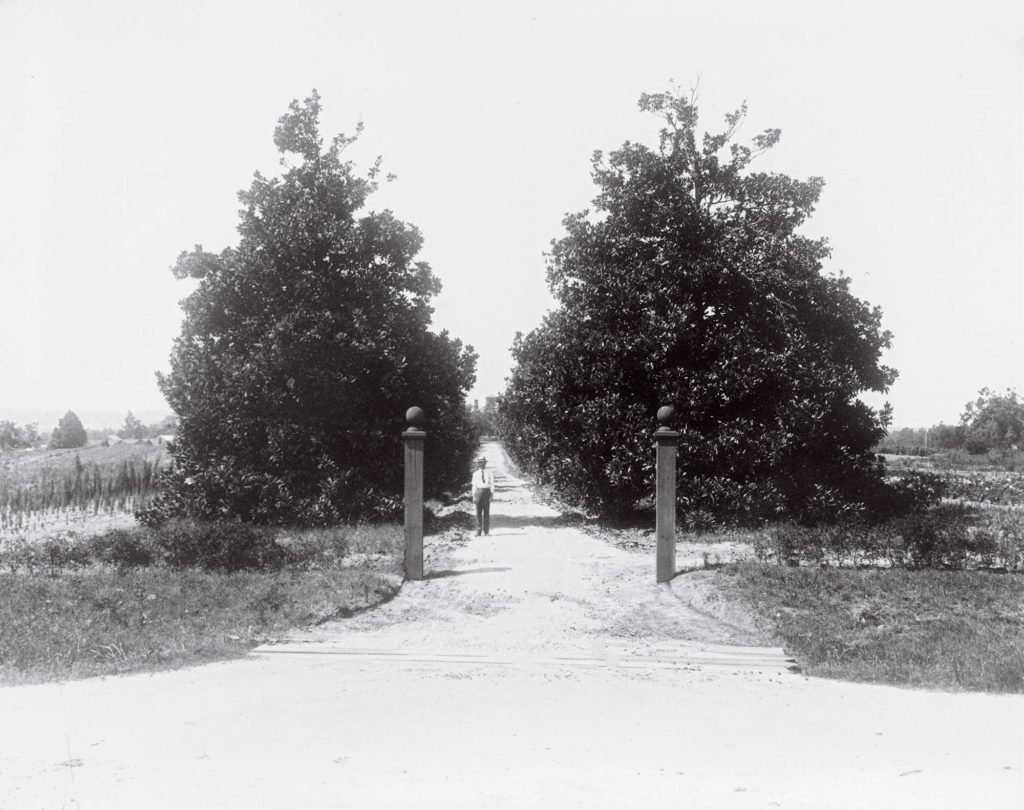
The clubhouse
America’s most recognisable clubhouse was completed in 1857 by Dennis Redmond, an Irish immigrant and agricultural reformer who had moved to Augusta from Utica, New York. Redmond hoped to prove that farmers in the South could economically grow fruit instead of cotton. He viewed his house, which he designed, as a demonstration project as well: a model “southern country house” with concrete walls a foot-and-a-half thick.
When Jones and Roberts first visited the property, the house was a wreck. It had no kitchen, no plumbing and no electricity. It had 14 rooms, but they were tiny and dark, and they were too damp to be used even for storage. The building was also small. It looks large in photographs, but much of its apparent bulk comes from its porches, which are three metres deep, and from wings added later. It was obvious to all that making the house even minimally habitable would require a total renovation. An engineer who inspected it at Augusta National’s request concluded that the members “would probably be better satisfied in a modern building with all modern conveniences”.
Rather than trying to salvage Redmond’s house, Jones and Roberts planned to spend $US100,000 on a new building several times its size, and they hired Willis Irvin, a local architect and developer. Irvin got as far as drawing plans. The building he designed had two large wings, an exterior of whitewashed brick, a slate roof and a vast neoclassical portico supported by four tall columns. Inside were two large locker rooms, one for men and one for women. The men’s locker room contained 400 lockers, some single and some double. Picture windows overlooked the course, and at numerous small sitting areas, members could play bridge, eat lunch and watch others putting out on the 18th green. The Augusta Chronicle published a detailed description of his plan, along with an artist’s rendering of the façade. A few early Augusta National members argued that the original house was worth preserving, but the issue was moot: the club lacked the money even to repair what was there.
At Georgia National, though, Jones and Roberts have plenty of money. They tear down the Redmond house and build Irvin’s ambitious design in the same location. The building becomes a popular gathering place for members and their families. Dances, banquets and holiday parties are often held in the large dining room.
Because Irvin sites the building so that the large windows in the men’s and women’s locker rooms face the course’s original 18th green (which is now Augusta National’s ninth), Jones and Roberts never change the routing of the course (as they actually did in 1935, between the first Masters and the second). Georgia National’s first hole is the one that course designer Alister MacKenzie, in his final routing, intended it to be: the hole that’s now Augusta National’s 10th. Georgia National’s par-4 second, par-3 third and par-5 fourth are terrific holes, but no one ever calls them Amen Corner.
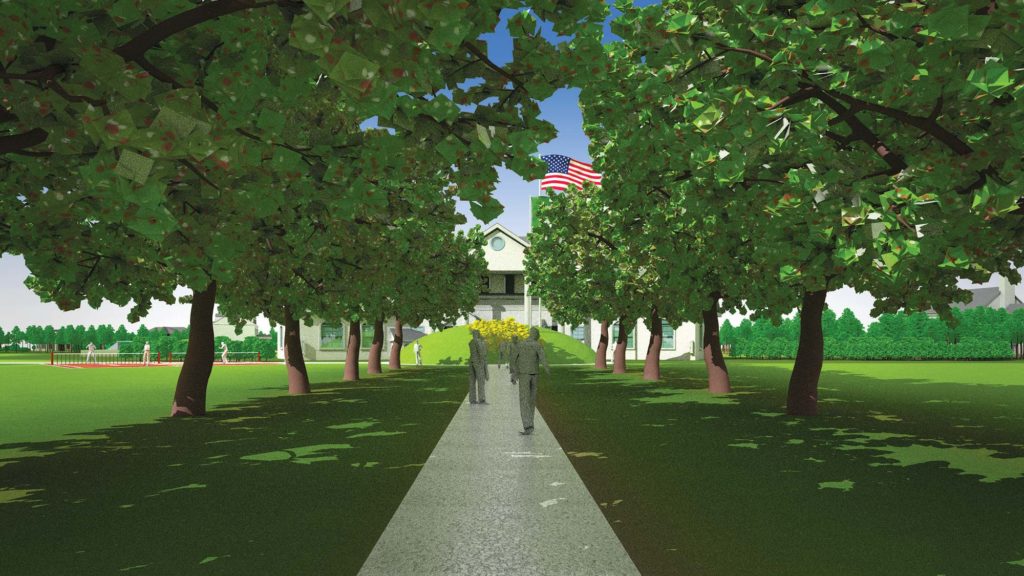
Magnolia Lane
The magnolia trees that line Augusta National’s driveway were planted from seeds before the Civil War. By 1931, the trees were fairly large, and the dirt path between them was known locally as
Magnolia Avenue or Magnolia Lane, but Jones and Roberts worried that there wasn’t enough space between the rows for cars to pass safely. They thought at first that the club’s main entrance would have to be situated 120 metres to the south-east, along a curving driveway that still exists, to the west of the Par-3 course. In the end, after some judicious pruning, they realised that Magnolia Lane really could be used as a driveway – soon to become the most celebrated entrance in all of sport.
At Georgia National, however, Magnolia Lane is used by pedestrians only. The club’s main entrance is where Jones and Roberts really thought they might have to place it, at the intersection of Washington Road and what’s now called Eisenhower Drive. Georgia National members love Magnolia Lane, but they use it as a strolling path, not a driveway. One of its most frequent functions is as a backdrop for family photographs taken at the wedding receptions of members’ children. It also plays an important role in the club’s annual Easter egg hunt.
The golf courses
Jones and Roberts originally planned to build a second 18-hole golf course, for women, as soon as membership passed 1,000. Roberts wrote, “Most all of the men who go to Augusta have families and in most cases, the wives and daughters play golf. If an invitation to join the club is to be favourably considered, there must be an appeal to the ladies. The construction plans should therefore include a second 18-hole course to be made relatively easy.”
Augusta National’s original construction budget included $US200,000 for the championship course, to be designed by MacKenzie, and $US140,000 for the women’s course. A possibility that Jones and Roberts considered for the women’s course was to buy the Lake course, the second golf course of Augusta Country Club, Augusta National’s neighbour to the south. However, they came nowhere near raising enough money. They built the championship course for $US100,000, half the original goal, but they managed that only by failing to pay many of the contractors and suppliers in full – MacKenzie included.
At Georgia National, Jones and Roberts have a large cash surplus, and in 1932 they do buy the Lake course, which is situated on the far side of Rae’s Creek, near the south-eastern corner of the club’s property. (The lake it is named for is Lake Olmstead, into which Rae’s Creek flows.) MacKenzie shortens and reconfigures most of the holes, with help from his friend Marion Hollins (who really did consult with MacKenzie briefly during the construction of Augusta National). Hollins won the US Women’s Amateur in 1921 and served as the captain of the first American Curtis Cup team in 1932. She was a founder and co-designer of Women’s National Golf Club on Long Island, which opened in 1923, and she was responsible for bringing MacKenzie and Jones together in 1929 for an exhibition match at her club, Pasatiempo, which MacKenzie also designed. Hollins also was the developer of Cypress Point and was credited by MacKenzie with conceiving its most famous hole, the par-3 16th.
At Augusta National, MacKenzie originally wanted to build a third course, a nine-hole “approach-and-putt” layout that could be played with irons and a putter – like a shorter version of Augusta’s actual Par-3 course, which was built in 1958. In 1933, MacKenzie drew plans for a longer short course: an 18-hole layout that would have measured 2,460 yards. (The longest hole would have been 190 yards; the shortest would have been 60 yards.) In addition, he wanted to add a 90-yard 19th hole to the championship course in the space between the first tee and the 18th green – a sloping area once used for practice – because, he wrote to Roberts, “Bobby Jones and some of the other directors thought it might be interesting to have a real 19th hole so that the loser could have the opportunity of getting his money back by playing double or quits.” But there was no money for any of those ideas.
Georgia National, however, has funds to spare, and it does build MacKenzie’s 18-hole approach-and-putt course, mostly where the Par-3 course is today. It also builds a 19th hole on the men’s course, modelled on a par-3 hole that Jones really did admire and once drew a sketch of – the ninth at St Annes Old Links, next to Royal Lytham, in England. Members sometimes play it during cocktail hour, even when they don’t have a bet to settle.
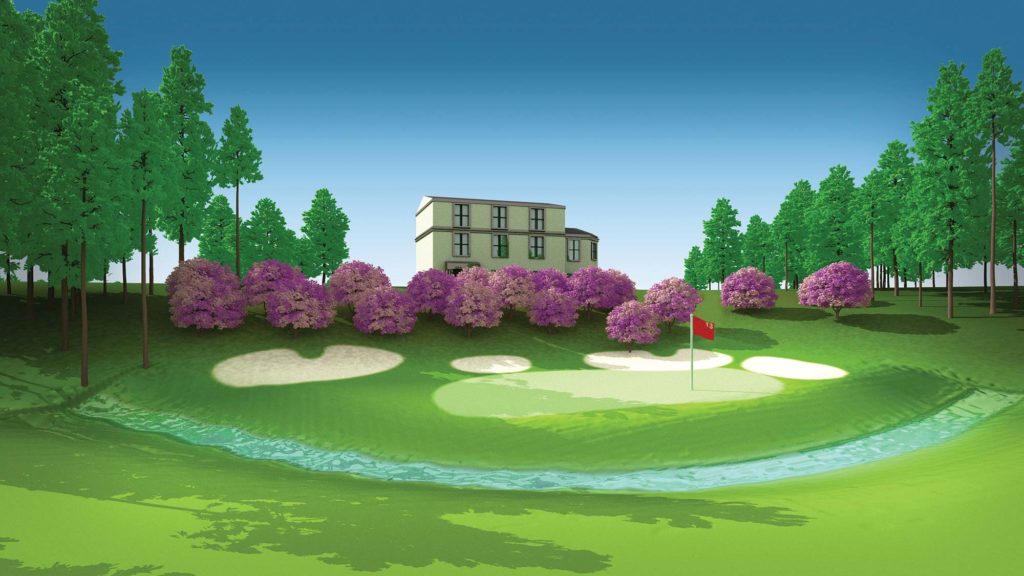
Real estate
Jones and Roberts hoped to finance Augusta National in part by selling building lots on the perimeter of the course – as Marion Hollins had also done at Pasatiempo. (MacKenzie and his wife bought one of the Pasatiempo lots.) Augusta National’s original site plan – prepared by Olmsted Brothers, a distinguished landscape architecture firm in Brookline, Massachusetts – included two dozen large building lots, plus several areas reserved for “future development”.
Difficult though it is to believe today, in 20 years of active marketing Augusta National found only one buyer: Montgomery Harison, a member, who bought three adjacent lots and built a large brick house overlooking the first green. Roberts later regretted the entire real-estate plan and eventually managed to buy and demolish the house that Harison had built. One of Roberts’ final acts before taking his life in 1977 was to walk to the first tee so that he could assure himself that the old house really was gone.
At Georgia National, though, the real-estate sale is a success, and houses the size of Harison’s are built on many of the lots. Freeman Gosden (who was Amos of “Amos ’n’ Andy” and a close friend of Roberts as well as an early Georgia National member) builds a large house on two lots overlooking the 11th hole (which is the second hole in Augusta National’s routing). A wealthy member buys the house from Gosden’s widow in 1995. He doubles its size and adds a heliport to the roof.
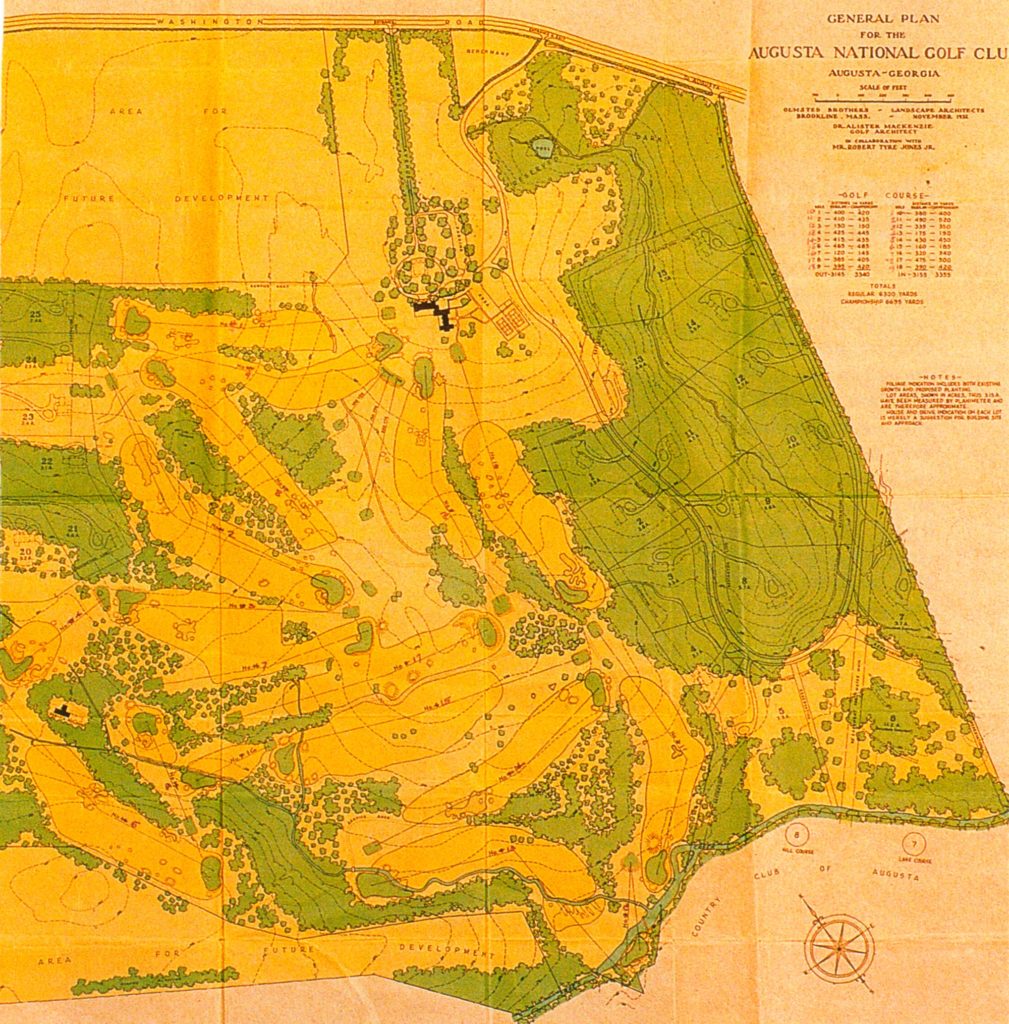
The Golf Hall of Fame
The Baseball Hall of Fame, in Cooperstown, New York, opened in 1939. The PGA of America responded by creating its own hall and inducting several legendary golfers, Bobby Jones among them. But the PGA’s hall had neither a building nor a plan for one.
Roberts loved the idea of a golf Hall of Fame, and he believed that Augusta National would be the ideal place to build it. His preferred location was on one of the building lots that the club had been trying to sell, unsuccessfully, for eight years: a six-acre parcel 220 metres east of the 10th green. Visitors to a hall situated there would have good views of the course, Roberts wrote to Jones, and members playing the course “would have a good view of an attractive building”.
Roberts had many ideas for the project. “The more I think about it,” he really did write in 1941, “the more I feel that a building that houses a few plaques or a few bronze busts and that offers nothing else to the public would prove to be a dull, worthless type of project, having no excuse for its existence except to attempt to glorify the leaders of golf. And I doubt that very much would be added to their fame.” One wing of the building, he continued, could contain “automatic movie machines”, which, for 25 cents, would show instructional films by the game’s great teachers. Another wing could serve as a library and a bookstore. Visitors would be able to buy souvenir booklets, postcards depicting the Augusta National course, and “popular-priced copies” of some of the books in the library.
Roberts also wanted to construct “a miniature Augusta National course surrounding the Hall of Fame that would be a practical pitch-and-putt course and could be made a most attractive part of the landscaping scheme”. The holes would be scaled-down replicas of the holes on the big course. He proposed a fee of 25 cents per round. He also suggested building an “especially attractive” public driving range based on a plan that Jones had come across and thought highly of, but the war intervened, and by the time it ended, Roberts and Jones had lost interest.
At Georgia National, though, the project does go forward, beginning in late 1939, and it’s all done exactly as Roberts described it. It’s financed by a new member James Middleton Cox, a newspaper publisher who years earlier had served three terms as the governor of Ohio (and whom Roberts really had been planning to tap for a major donation, partly to deter Cox from his original idea, which was to erect an immense statue of Jones). Golf-playing tourists love the hall, and sometimes catch glimpses of Jones playing on the big course.
The hall is a still lively tourist attraction today. The most popular feature is the immense World Tour building, in which visitors can play all of Alister MacKenzie’s greatest courses – Cypress Point, Lahinch, Royal Melbourne and Georgia National among them – on state-of-the-art simulators with wrap-around screens.
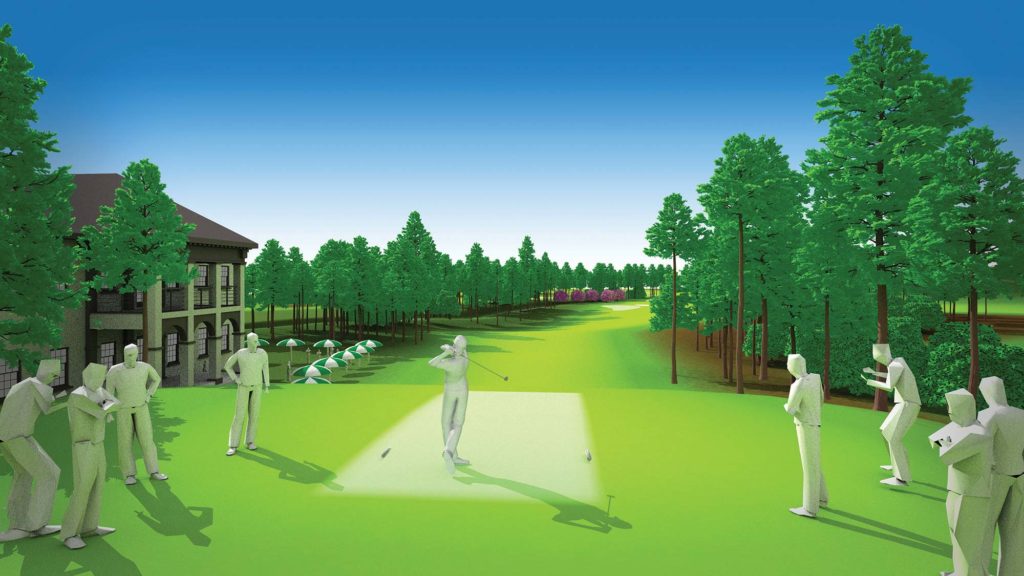
The US Open
Jones’ original dream was to build a course that could host a US Open, which had never been played farther south than Illinois. In early 1933, he and Roberts invited Prescott Bush, the chairman of the USGA’s tournament committee, to visit Augusta National. Bush played two rounds. He liked the course but concluded that it wasn’t ready for a US Open. In addition, he pointed out that any Open at Augusta National would have to be played in late March or early April, when the weather was at its best and the local resorts still had guests. That was almost three months earlier than the US Open’s usual dates, and to accommodate the change the USGA would have to upend its system of sectional qualifying. Herbert Jaques, the USGA’s president, wrote to Jones and Roberts that “whereas we are all favourably inclined to this move in the near future, we do not think it is practical to attempt in 1934”.
But Augusta National couldn’t wait. The main reason Roberts was in a hurry was that he knew a US Open would catch the attention of potential members, which the club desperately needed. He decided that if the club couldn’t get the Open, it should conduct a tournament of its own. The first Augusta National Invitation Tournament was played in late March of 1934. It was officially renamed the Masters in 1939.
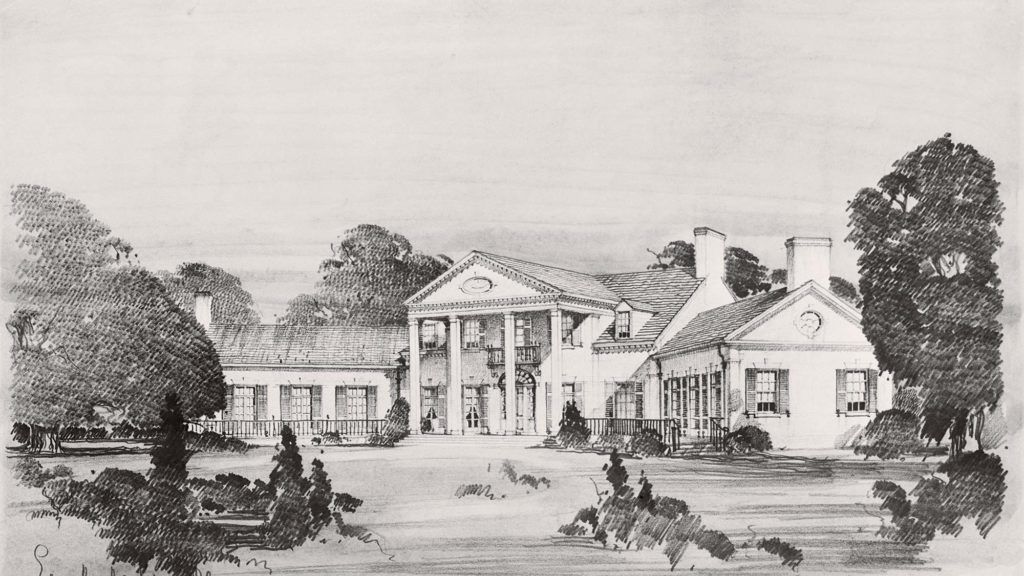
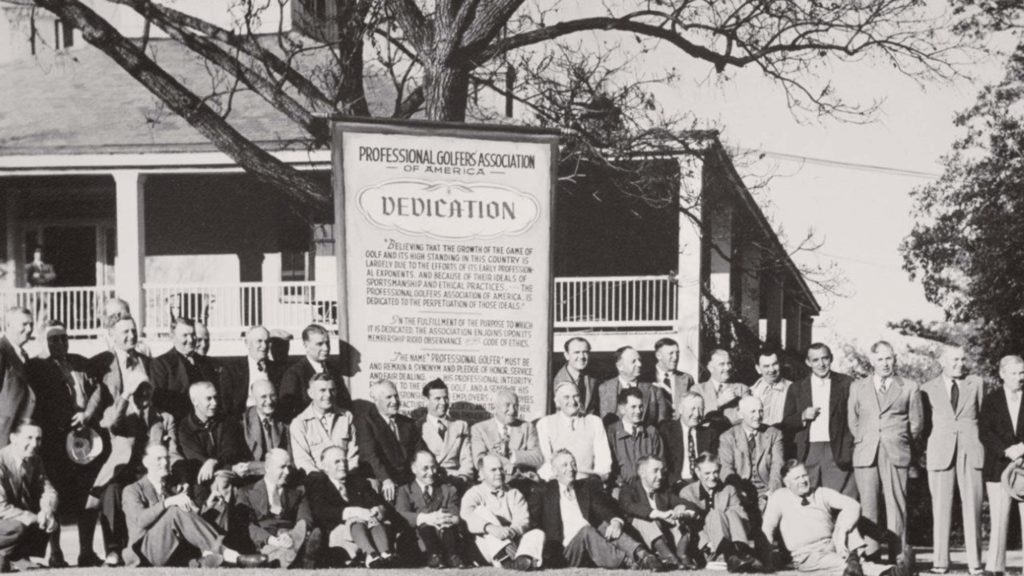
At Georgia National, though, Prescott Bush’s visit is an unqualified success. He loves the course, and he and Jaques happily make the necessary changes in the USGA’s qualifying schedule. The US Open is played in Augusta in the spring of 1934, instead of at Merion, and it returns roughly once a decade after that. The US Amateur and the US Women’s Open are often played at Georgia National as well.
One consequence of playing the 1934 US Open at Georgia National is that Jones can’t make his much-anticipated return to competition. The USGA ruled in 1930 that by signing contracts with Spalding and Warner Bros, he had ceased to be an amateur, and he was unwilling to compete as what he once called “an uneducated club servant”: a golf professional. Roberts finessed that issue with the first Masters by making no distinction, in the tournament’s programs and other materials, between amateurs and professionals, but the USGA would never have done the same. At Georgia National’s first US Open, Jones is a gracious host and honoured spectator.
Another consequence of holding the 1934 US Open at Georgia National is that Olin Dutra, who won the actual Open that year at Merion, isn’t in the field. The reason (as he really did explain to Roberts, in a letter declining his invitation to play in the first Augusta National Invitation Tournament) is that at that time of year he was unable to take time off from his job as the head pro at Brentwood Country Club in Los Angeles: “My duties at my home club compel me to remain at home, and you may rest assured that I must and do rescind your kindly invitation with reluctance.” The winner of Georgia National’s first US Open is Gene Sarazen (who really finished second to Dutra by a stroke at the Open at Merion. Sarazen also skipped the first Augusta National Invitation Tournament because he and Australia’s Joe Kirkwood were doing exhibitions in South America, but Kirkwood, who planned the trip, would not have scheduled it to conflict with a US Open).

The Masters
At a meeting in a hotel in Augusta in 1937, a committee of older professionals established a senior division of the PGA and voted to hold a national championship for players 55 or older. Augusta National offered to host the tournament, and the inaugural PGA Seniors’ Championship took place that year on the last day of November and the first two days of December.
Alfred Severin Bourne, who had been one of Augusta National’s founding members and was now its vice-president, donated $US1,500 for a silver trophy and promised to cover the competitors’ bar tab.
“It was a delightful occasion, and it did one good to see these old fellows enjoy the sport,” Allie Berckmans, the club’s general manager, wrote shortly afterwards, in a letter to a member. “They didn’t give a rap about the prizemoney; all they wanted was to try to win the cup donated by Mr Bourne and have a good time.”
The winner was Jock Hutchison. The tournament returned to Augusta National the next year, when it was won by Fred McLeod, who beat Otto Hackbarth in an 18-hole playoff. In 1939, the Seniors’ Championship found a regular sponsor and moved to Florida. In 1963, Hutchison and McLeod became the first “honorary starters” of the Masters.
At Georgia National, the Seniors’ Championship is such a success that the PGA accepts an offer from Jones and Roberts to make the club its permanent home. Jones serves as the tournament’s honorary chairman until his death in 1971. He also hosts a barbecue for the competitors, and, as long as his health permits, plays a practice round with the previous year’s winner. The Bourne Cup is displayed on a pedestal in the soaring entry hall of Willis Irvin’s clubhouse. In 1939, the competition is expanded to 72 holes, and Jones and Georgia National officially give the tournament its permanent name: the Masters.



